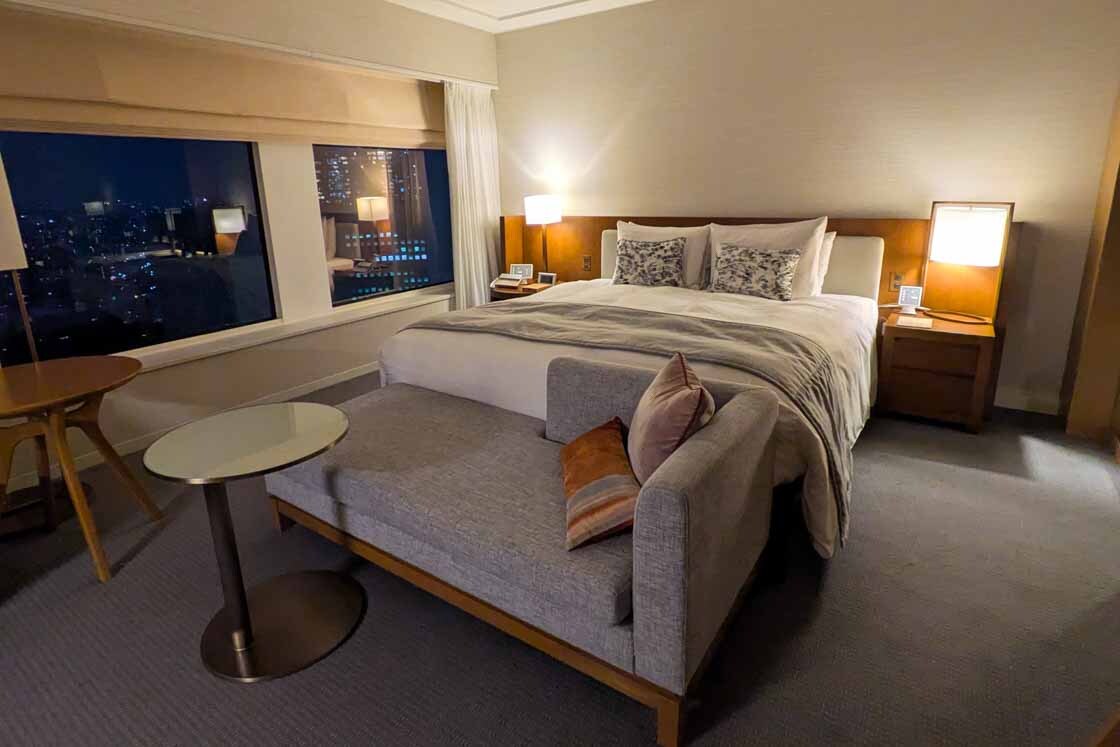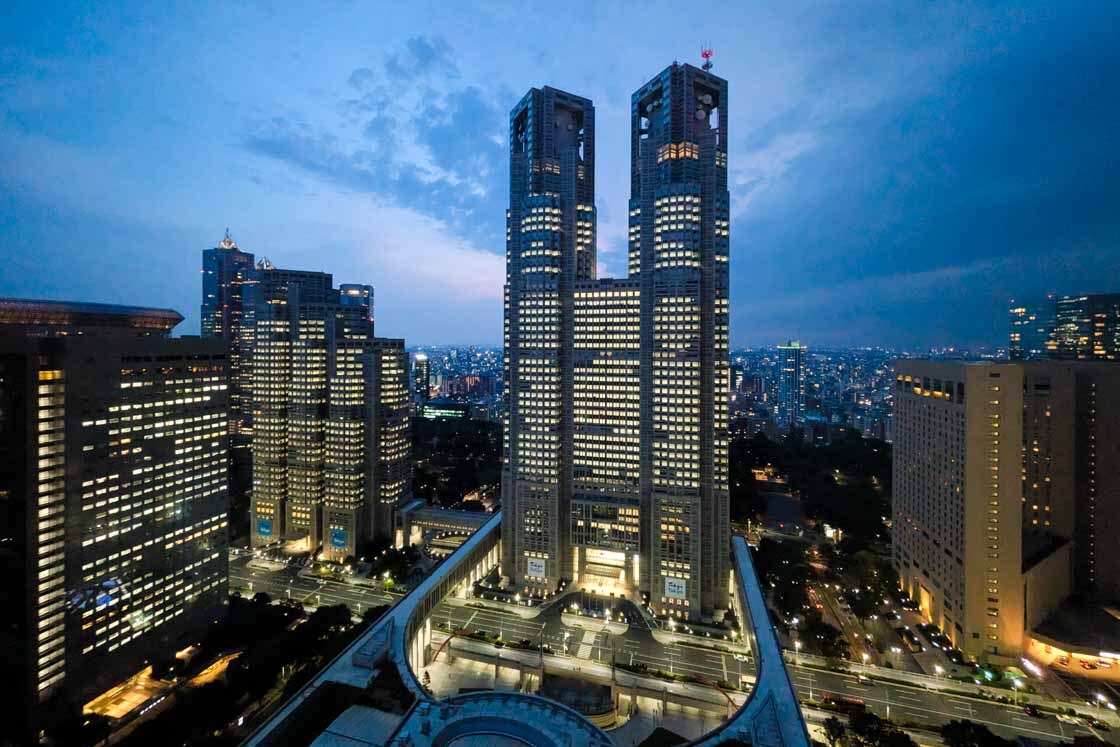A First Day in Tokyo: Exploring Shinjuku Further
My latest trip would make for a great first day in Tokyo. It's got a nice mix of popular landmarks and lesser-known spots, reached both on foot and by train.
Of course, Tokyo is absolutely huge, which can make things confusing on a first visit. Part of the confusion is that central Tokyo is broken down further into 23 different "wards", which are sometimes referred to as cities themselves! Shinjuku is one of these wards, and perhaps one of the most famous, so that's where we're going today.
This itinerary could be used for your first ever day in Tokyo, but we'll be hitting some of the big names as well as a few more niche spots, so hopefully first-timers and Tokyo lovers alike can get something out of this trip. As always, feel free to mix and match to suit your travel style.
Starting Point
This time, for easy access to Shinjuku, the Keio Plaza Hotel Tokyo kindly offered to sponsor this article and video. So I've made the hotel the day's starting and end point, because there is a bus straight from both Haneda and Narita airports, making it really easy to stop by and drop your luggage at the bell captain desk before heading out.
If you arrive in the morning like I did, you'll be too early to check in, but the hotel has a little bakery and food boutique called Poppins where I grabbed an almond croissant for breakfast.
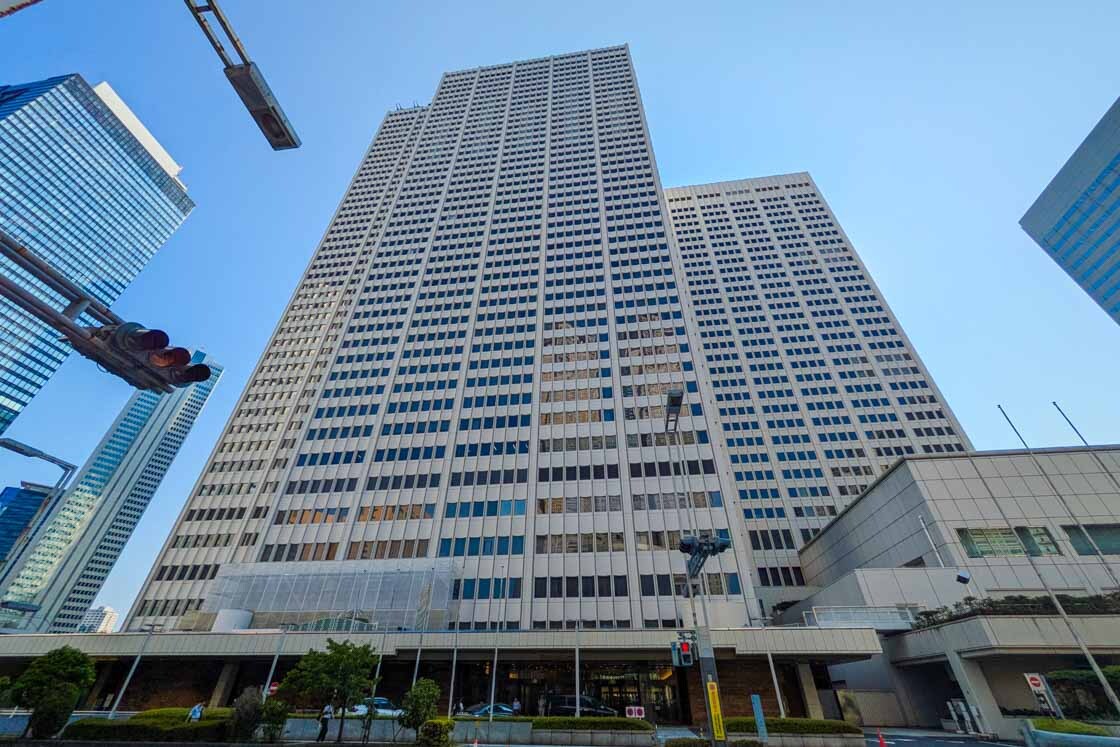


Shinjuku Gyoen
From there, I headed straight to the famous Shinjuku Gyoen garden. Depending on your energy levels you can either walk or grab a taxi. It's about a 20-minute walk, so not ideal if you visit in the middle of summer or winter.
If you've never been to Tokyo, you probably have an image of skyscrapers, concrete and neon lights wherever you go, but in fact, there are quite a lot of green spaces. It's really surprising to be surrounded by shops and cars one moment, and then step into Shinjuku Gyoen's 0.5 square kilometers of peace and quiet the next.

The park is beautiful year-round, and has a number of different sections to it which shine throughout the seasons. I was a bit early for the autumn colors, but the luscious greenery made for a lovely walk, especially around the Japanese Garden area and the ponds.
While the beginnings of Shinjuku Gyoen came to be in the late 16th century, it wasn't until its renewed unveiling in 1906 that Japan was introduced to its largest scale garden at the time, complete with the Japanese Garden section. Everything about the gardens is a story of contrasts and complements, as the redesign was created with a Japanese and a French designer at its core: Fukuba Hayato and Henri Martinet.
My personal favorite spot is on the bridge by Naka-no-Ike pond, because it is one of the first places I visited when I came to Tokyo for the first time, and it has that perfect contrast of natural scenery and manmade skyscrapers.
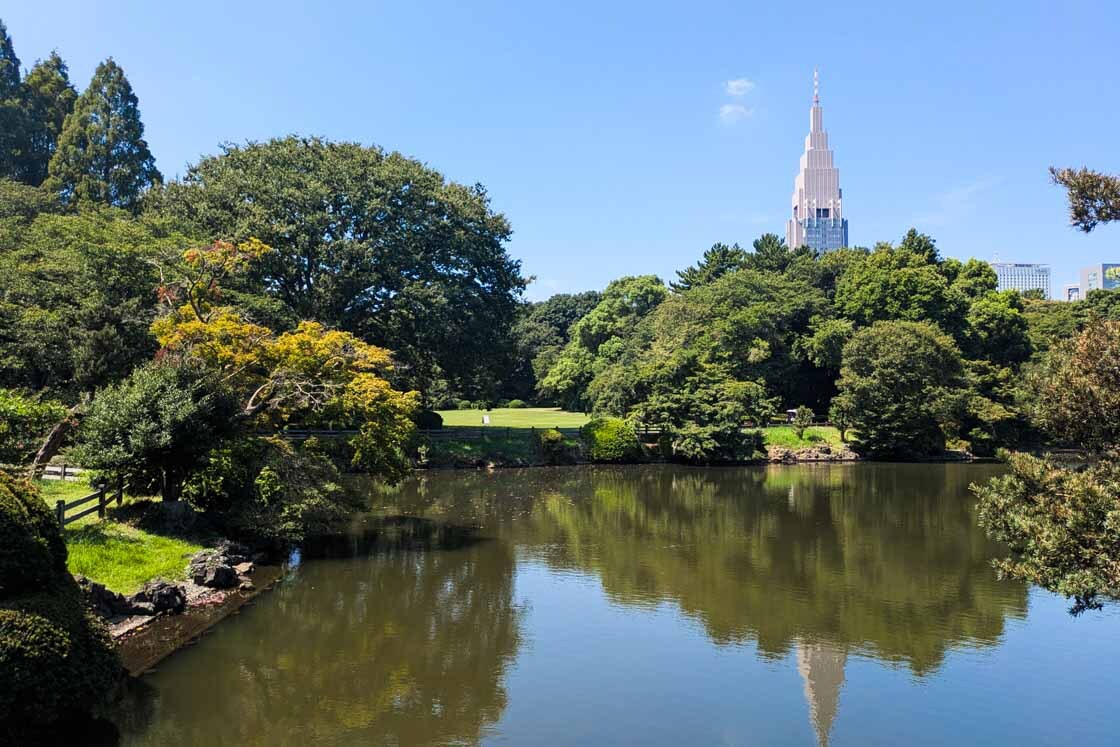
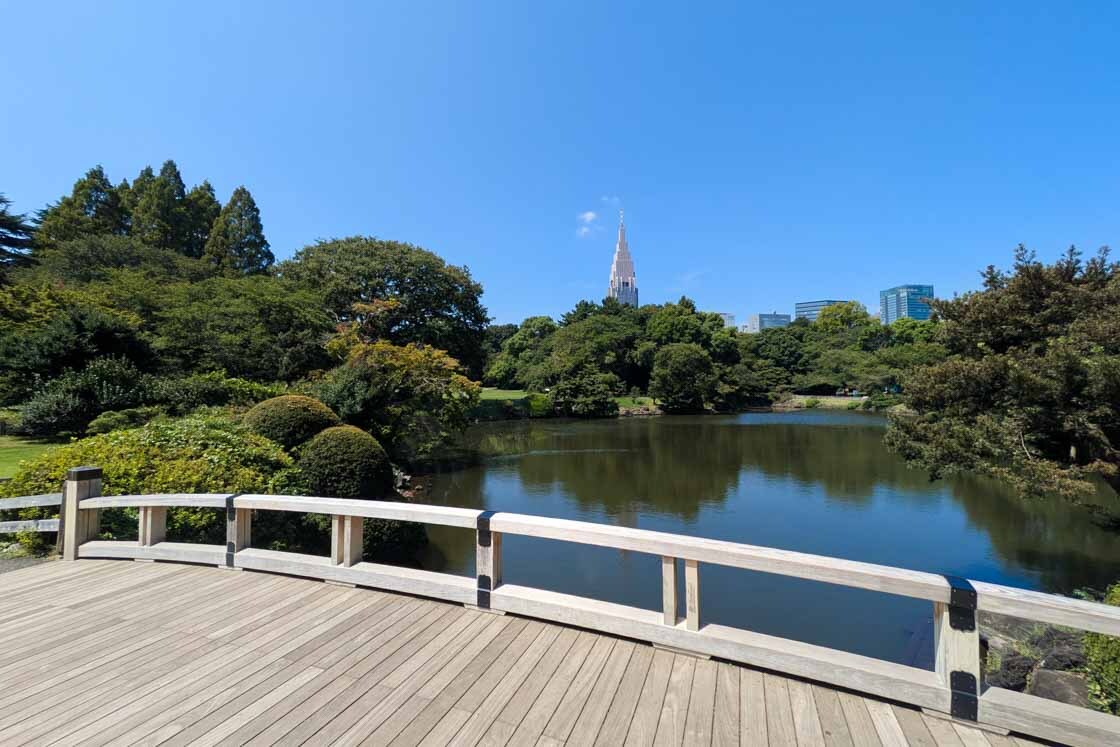

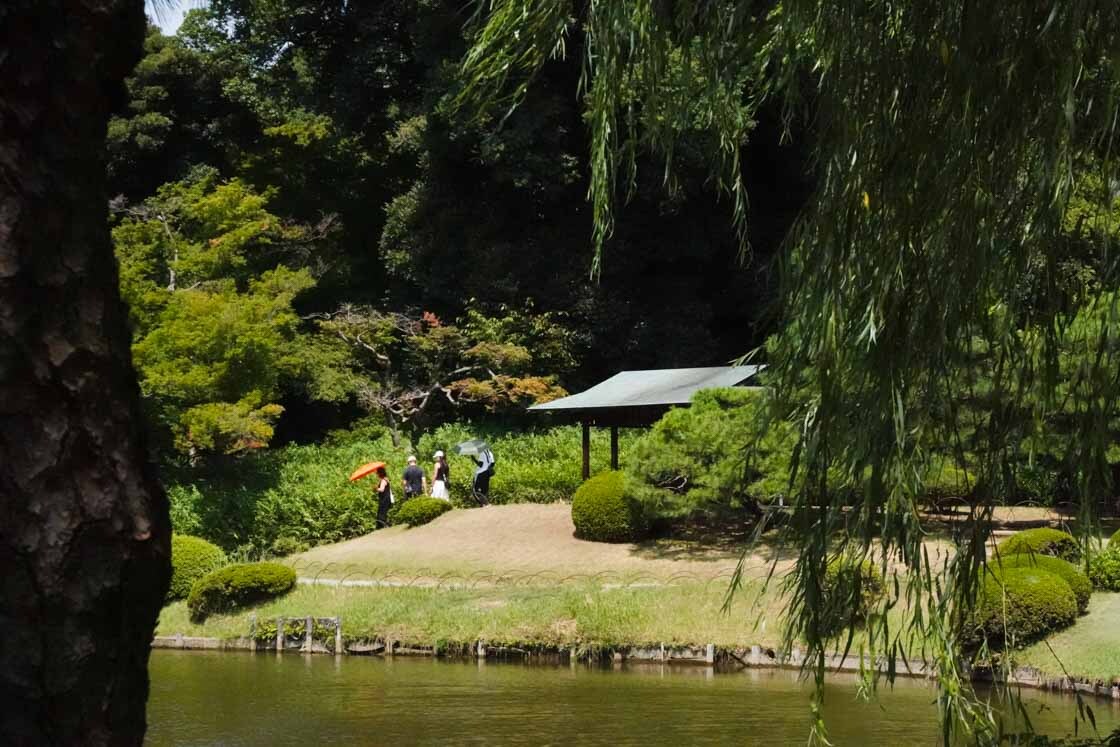
Stopping by the National Stadium
I exited the park via the Sendagaya Exit, which takes you to Sendagaya Station. But first I wanted to make a quick stop to share with you the architectural sightseeing spot of the National Stadium. It takes about 10 minutes to walk from the exit to the stadium, depending on which side you go to.
The stadium was designed by Kuma Kengo, an architect who seems to be pretty much everywhere in Japan! It was completed in 2019 and used as the main stadium for the 2020 Olympics and Paralympics.
You can walk around the stadium to marvel at its design features, but you can get a particularly nice view from the Japan National Stadium Square on the south side.

Remember the name Kuma Kengo, because we might see a bit more of him later...
Kagurazaka
After a good dose of a famous Shinjuku spot, I then headed over to somewhere you might not have heard of - Kagurazaka.
Kagurazaka is a small Shinjuku neighborhood known as Tokyo's "Little France" due to its concentration of French cafes, shops and restaurants. It got its French reputation from an accumulation of culture around the two major French schools in the area.
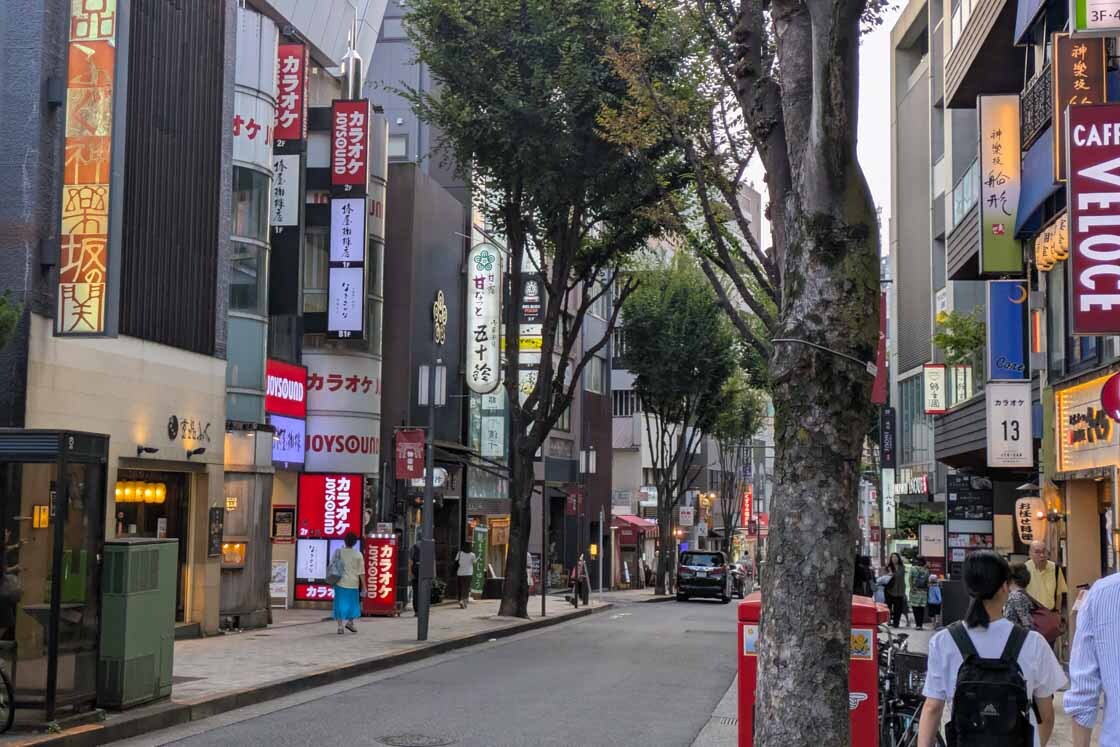
But with the idea of a potential first day in Tokyo in mind, I thought I'd share with you the more Japanese side of the neighborhood, starting with Akagi Shrine.
Looking at these pictures, do you notice anything familiar? Take a look at the wooden accents.


That's right, this shrine was also designed by Kuma Kengo!
This is quite a feat for a modern architect, as most shrines are typically built in the traditional style, all with similar features. Kuma has reimagined traditional elements in a modern way, while keeping all the core shrine features like the main hall and worship hall. The most striking difference is the use of glass and thin latticework on the outside here, using hinoki cypress. The open and airy design gives it a more contemporary look.
The shrine fits in well with the chic and contrasting atmosphere of Kagurazaka with its cute French cafes alongside pockets of Japanese culture.
To explore a bit more of that Japanese side, I also visited a few shops in the area. My two recommendations are Kukuli and Wamonoya Kaya. Kukuli has specialist silk items as well as a variety of fabrics, scarves and decorative pieces. Wamonoya Kaya, on the other hand, is more of a Japanese variety store, filled with clothes and knick knacks to take home with you.

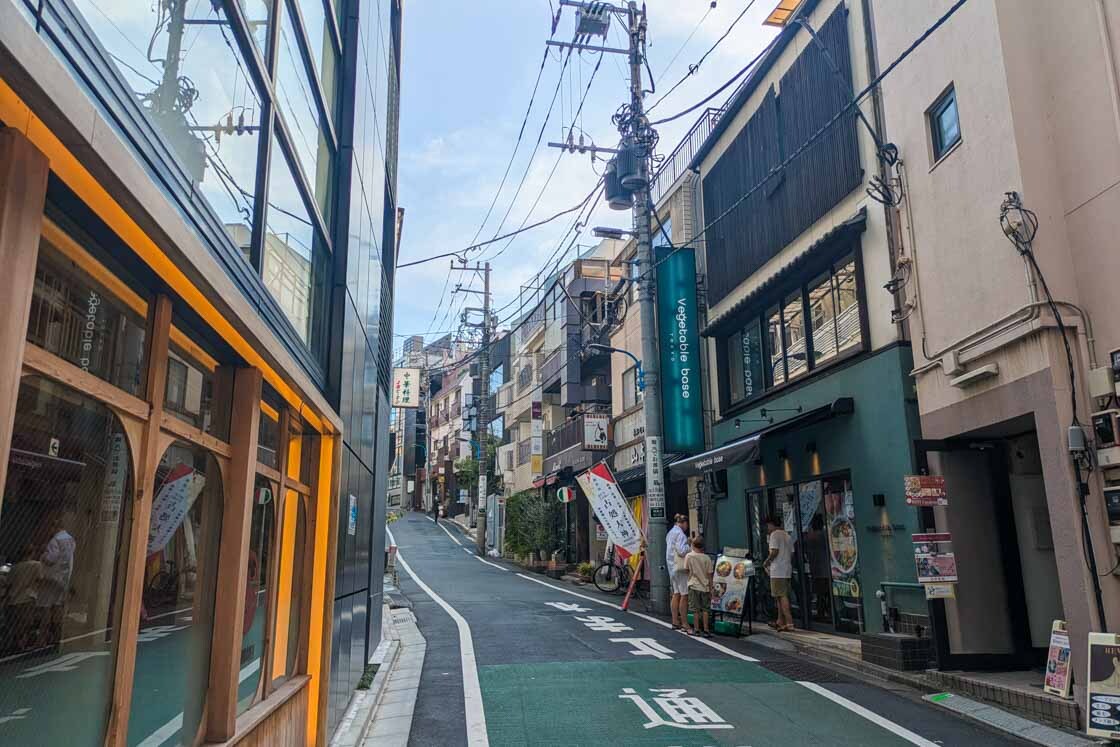

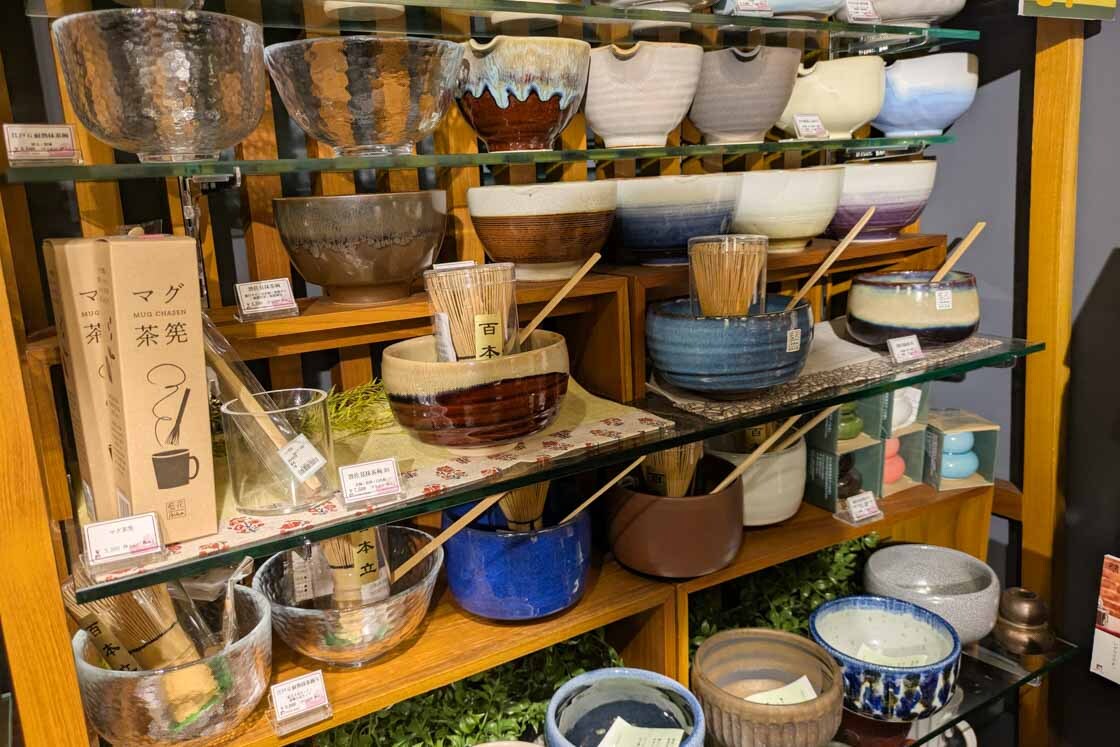

Evening Projection Mapping and Hotel Stay
Of course, there are a lot of hotels in Tokyo, but the Keio Plaza Hotel Tokyo is a great choice because you can squeeze in one last activity in the evening without having to leave the hotel again. And that activity is watching the projection mapping light show on the Tokyo Metropolitan Government building.
The 15-minute shows start every 30 minutes from after sunset until 21:45. The towers of the Tokyo Metropolitan Government building are lit up with animated digital artwork under different themes, dancing around under the night sky.
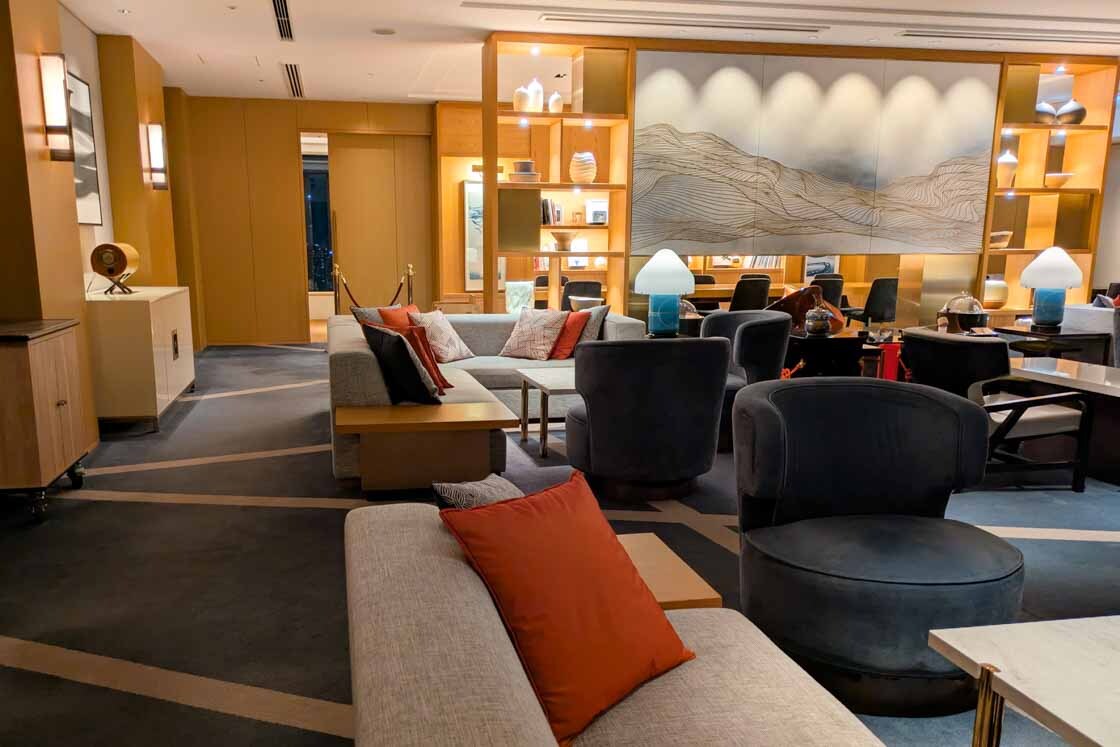
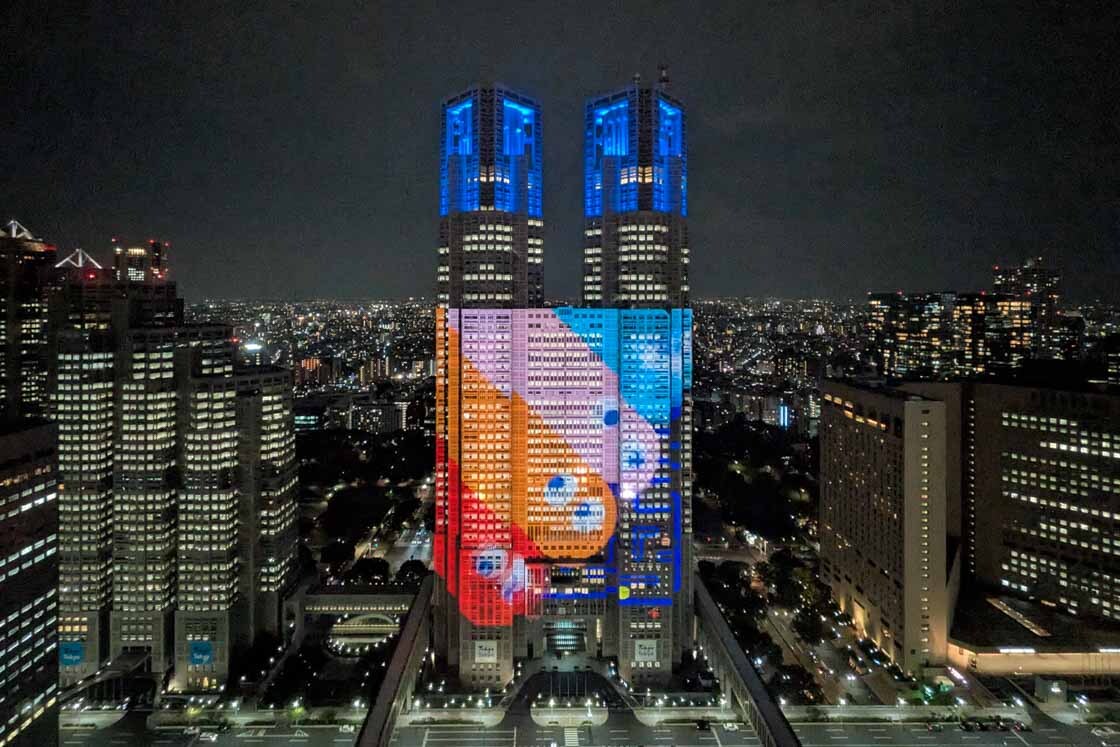
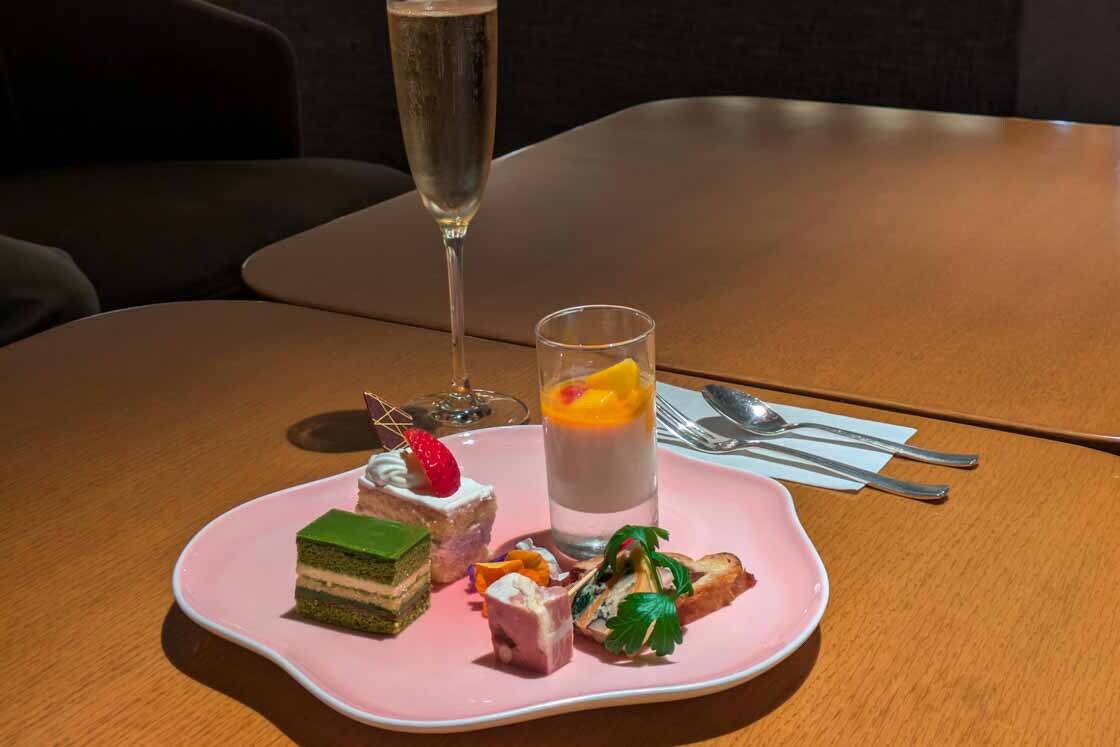
You can see the projection mapping from west-facing rooms at the Keio Plaza Hotel Tokyo, or from the club lounge on the 45th floor. I decided to watch the spectacle with wine in hand from the lounge, tasting a few of the light bites on offer too, before heading to my room for the night.
My room had a great view of the projection mapping too, and a lovely wide windowsill to sit and watch it from. It was also equipped with all the luxuries of a club room you might expect, like a comfy double bed, sofa, spacious bathroom, and even luxurious L'Occitane amenities.
However you go about it, your first day in Tokyo is going to be tiring, so it's at least nice to end the evening in comfort!
